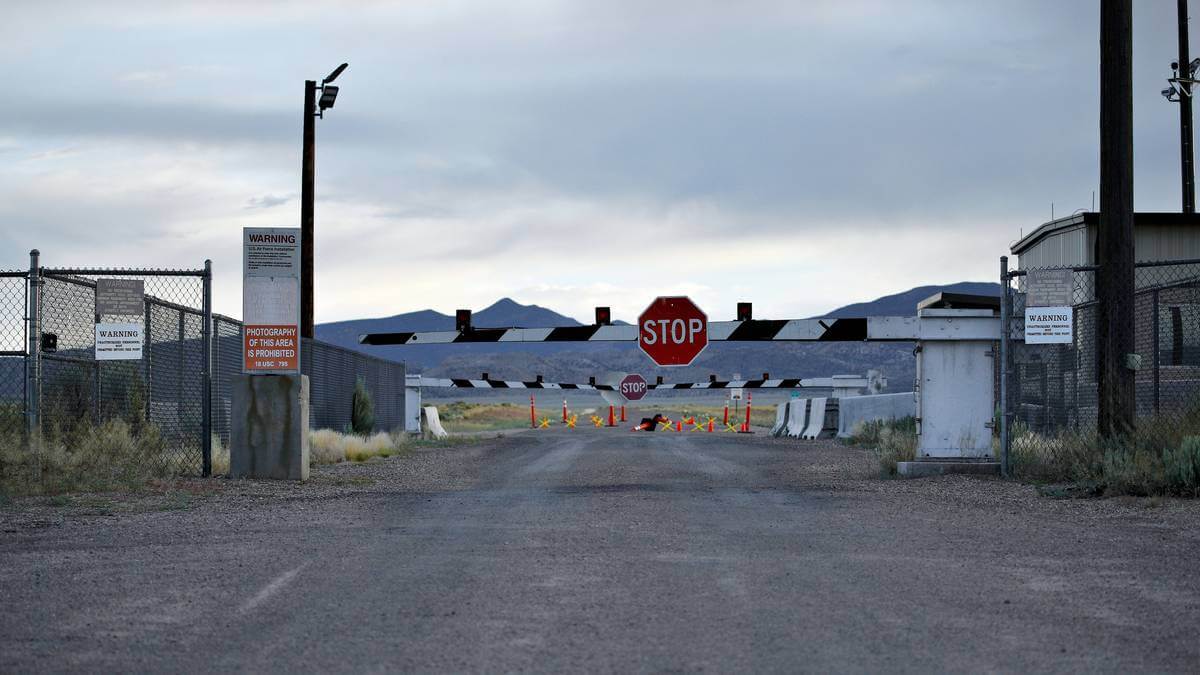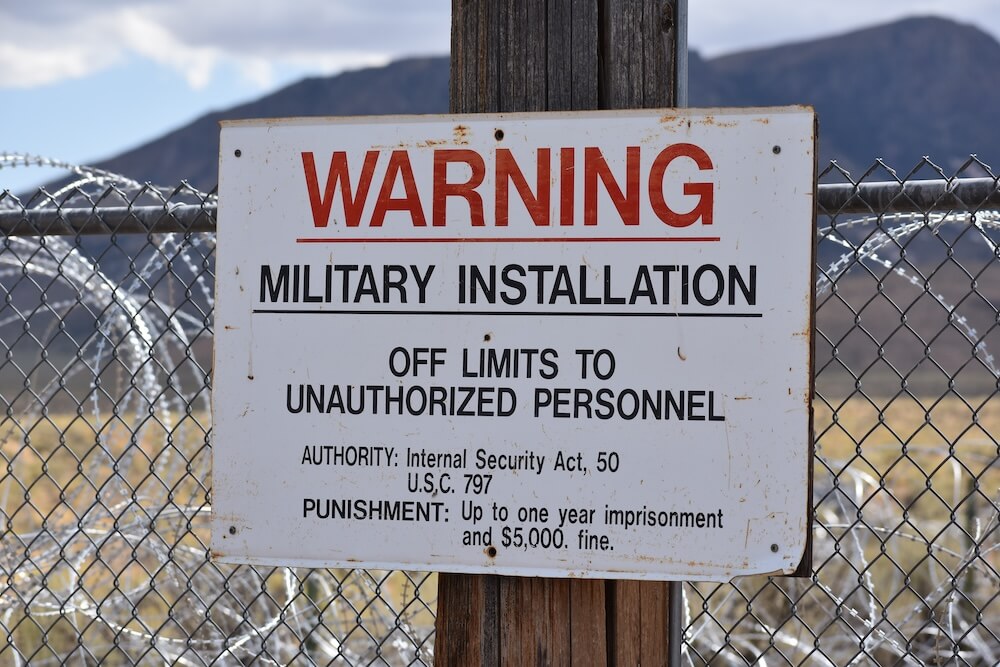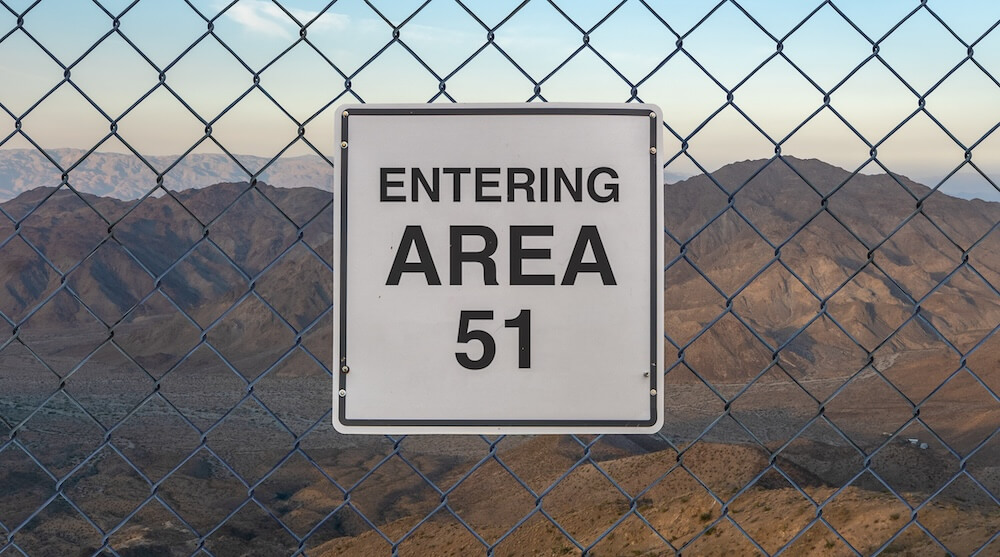The Nevada desert is a huge area of sand and rock that seems to go on forever. The sun beats down on it all day long. In this barren area, 83 miles northwest of Las Vegas, there is one of the most famous but also mysterious military bases in history. The US government wouldn't admit it existed for decades. Paradise Ranch, Watertown, Dreamland, Groom Lake, and Homey Airport are some of the names that have been used for the area. It is known around the world as Area 51, though.
This story isn't about aliens or flying saucers, even though those myths are now part of the place's identity. This is the real story of Area 51. It includes some of the most advanced planes ever made, the Cold War, which almost led to the end of the world, and the amazing lengths a government will go to keep its technological secrets safe.

The Beginning of a Secret: Project AQUATONE
The US and the Soviet Union were in an ideological fight in the early 1950s. American intelligence agencies had a big problem: they didn't have much reliable information about what the Soviet military could do. How many bombers did the Russians have? Where were their nuclear power plants? American military planners were working in the dark because they didn't have any answers, and in the atomic age, not knowing could be deadly.
The answer came from Clarence "Kelly" Johnson, who worked in Lockheed's famous Skunk Works division. In 1954, he came up with a crazy idea: an airplane that could fly at 70,000 feet, which was much higher than Soviet air defenses. At that height, the plane could take pictures of large areas of Soviet land without fear of being shot down. The CIA was in charge of the project, which President Dwight D. Eisenhower called AQUATONE.
But where could you test a plane like that? Richard Bissell, an officer in the CIA, Colonel Osmund Ritland of the Air Force, and Kelly Johnson flew over Nevada on April 12, 1955, looking for the best spot. They saw Groom Lake, which is a dry salt flat close to the Nevada Proving Ground of the Atomic Energy Commission. Johnson said that the choice was made right away: "We flew over it, and in thirty seconds, you knew that was the place. It was right next to a dry lake."
The CIA asked the Atomic Energy Commission to buy the land, which is marked on the map as "Area 51," and add it to the Nevada Test Site. Johnson called it "Paradise Ranch" to make the empty land sound like a nice place to work. People quickly started calling it "The Ranch."

On May 4, 1955, work on the building began right away. By July, people from the CIA, Air Force, and Lockheed were coming all the time. The first U-2 delivery to the Ranch was on July 24, 1955. Within three months, the base had a single paved runway, three hangars, a control tower, and basic living quarters. On Monday mornings, employees flew to Nevada and came back to California on Friday evenings.
On August 1, 1955, the U-2 made its first flight over Groom Lake by accident while testing high-speed taxiing. The plane was revolutionary: it was a jet with wings that looked like a glider and were 103 feet long. Its only purpose was to fly higher than any other plane in history. Less than a year later, U-2s were flying missions over the Soviet Union and were called "immediately the most important source of intelligence on the Soviet Union" by declassified CIA reports.
Project OXCART: Faster Than a Bullet
The Powers shootdown showed that the U-2 was weak. We needed a new way that didn't just depend on height. The CIA started Project OXCART in August 1959 to make a plane that could fly higher, faster, and be much harder for radar to find. This was the start of stealth technology.
The facilities at Area 51 weren't big enough for the new mission. After that, there was a huge expansion. In January 1962, the FAA added 600 square miles to the restricted airspace around Groom Lake. This created what insiders called "the Groom Box," a cube of airspace that was off-limits from the ground to outer space. The length of the runway was increased to 10,000 feet. The new planes needed a special type of fuel called JP-7, so huge tanks were built to hold it. The civilian mine in Groom Basin is no longer open.
On the night of February 26, 1962, the first A-12 test plane was driven from Burbank to Area 51. The Archangel-12 was amazing. Its fuselage was wide and disk-shaped, which is not like any other plane. It was mostly made of titanium. On April 26, 1962, the A-12 made its first flight. At the time, the base had more than 1,000 people.
The plane worked very well. It could go faster than a speeding bullet and cover the whole continental United States in 70 minutes, taking pictures of things that were one foot long from 90,000 feet. David Robarge, a CIA historian, called it "the most advanced aircraft ever built."
The Invisible Aircraft: The Beginning of Stealth
While Blackbirds pushed the limits of speed, another revolution was brewing at Area 51 in the 1970s: what if an airplane could be almost invisible to radar?
The theoretical basis came from Pyotr Ufimtsev, a Soviet physicist who wrote down equations for predicting how electromagnetic waves would bounce off of shapes. Lockheed mathematicians knew that these could be used to make a plane with a very low radar signature. They made a computer program called "Echo" that could guess how radar signals would bounce off of things. The program showed that flat panels set up at certain angles could send more than 99% of radar energy away from where it came from.

DARPA gave Lockheed a contract in 1976 to build Have Blue, a proof-of-concept plane. They built two test planes, and the first one flew over Area 51 in April 1977. The odd, angular plane was able to avoid radar. Lockheed got a contract to make the F-117 Nighthawk on November 1, 1978.
On January 17, 1981, the first YF-117A got to Area 51. At 6:05 AM on June 18, test pilot Hal Farley took it off. By the beginning of 1982, there were four more working prototypes at the base. The testing team found a big scorpion in their office and called themselves the "Baja Scorpions."
UFOs and the Strength of Keeping Secrets
Because of how secret Area 51 was, it was a great place for conspiracy theories to grow. The link to UFO legends isn't a coincidence, but conspiracy theorists don't think so.
In the middle of the 1950s, when Area 51 opened, there were a lot more UFO sightings in Nevada. The Reno Evening Gazette wrote about "bright green" things "falling at speeds too fast to be an airplane." The Air Force's Project Blue Book got a lot of the same kinds of reports.
Declassified CIA files now show what happened. Commercial pilots flying at 20,000 to 30,000 feet would see U-2s or A-12s flash by at 70,000 to 90,000 feet. There were no civilian or military planes that could fly that high—most planes could only fly up to 40,000 feet. The titanium A-12, which went more than 2,000 mph, reflected sunlight in ways that looked like they came from another world. The CIA looked at flight records to get rid of UFO reports, but they couldn't tell the truth without putting national security at risk.
The Fortress: Steps to Keep Safe
People say that Area 51 is very safe. Orange posts and signs saying "use of deadly force is authorized" mark the perimeter. Guards known as "camo dudes" drive white pickup trucks around the area. There are reports that they are civilian contractors working for companies like AECOM.
The security system goes way beyond just having people patrol. Buried motion sensors in the surrounding areas let guards know when visitors are coming long before they get to the boundary. Surveillance cameras cover the same area from different angles, making it almost impossible to get close without being seen. Helicopters watch over things from the air.
The restricted airspace R-4808N covers about 575 square miles and goes from the ground to space. Air Traffic Control must give permission for civilian planes to enter, which is almost never given. Even military pilots can get in trouble for flying into the "box" that is off-limits. If you fly into R-4808N on purpose, you could be court-martialed, dishonorably discharged, and sent to jail.
JANET: The Hidden Airline
An airline that doesn't really exist gives most employees access. Every weekday morning, workers meet at the Gold Coast Terminal at Harry Reid International Airport in Las Vegas and board white Boeing 737-600 planes with a red stripe but no logos.
These are JANET flights, which can stand for either "Joint Air Network for Employee Transportation" or "Just Another Non-Existent Terminal." Amentum, a defense contractor, runs them for the U.S. Since 1972, JANET has taken workers to secret Air Force bases.
There are six Boeing 737-600s in the current fleet. These are some of the rarest types of commercial planes. The Air Force bought these planes in 2008. They used to fly for Air China. JANET flights go to places like Area 51, Tonopah Test Range, Edwards Air Force Base, Naval Air Weapons Station China Lake, and Palmdale Plant 42 several times a day.
Official Recognition and Current Operations
For years, the U.S. government wouldn't admit that Area 51 was real. On June 25, 2013, the CIA agreed to release declassified documents that intelligence historian Jeffrey T. Richelson had requested through the Freedom of Information Act in 2005. The papers told the story of the U-2 and OXCART programs and were the first time the government officially recognized Area 51.
The CIA says that UFO sightings in the area are caused by test flights of the U-2 and other military planes. The intense secrecy was needed to protect the development of classified aircraft, not to hide contact with aliens. The United States Air Force says the facility is "an open training range" that helps "development and testing of experimental aircraft and weapons."
Area 51 is still very busy today. Satellite pictures show that construction and expansion are still going on. New hangars have been built, the runways have been kept up, and the facilities have been improved. The base is still testing new aircraft and weapons systems, but some programs are still secret. The perimeter has been moved back several times so that no one can see it from public land.
The Legacy
Area 51 is a one-of-a-kind place where technology, government secrecy, and popular myths all come together. The real history of developing planes that changed what was possible in aviation is amazing enough without alien spacecraft. The U-2 changed the way intelligence was gathered. The A-12 and SR-71 flew higher and faster than any other plane. The F-117 showed that stealth technology could work in battle.
The secrecy that kept these programs safe also made one of the most well-known conspiracy theory websites in the world. The fact that the government uses UFO myths as deliberate disinformation adds another layer to the story. Area 51 shows how secrets, even when they are needed for national security, can create myths that become real.
Rachel, Nevada, a small town with a population of 56, has become a pilgrimage site for people who love UFOs. The Little A'Le'Inn restaurant serves "Alien Burgers." Nevada State Route 375 is officially called the "Extraterrestrial Highway." People from all over the world come to the desert to see if they can find something strange.
But the guards at the orange posts stay alert, the motion sensors keep an eye on things, and the JANET flights leave Las Vegas every morning, taking workers to a place that is real but whose purpose is still a secret. Somewhere in that restricted airspace, above the dry lakebed where this story began seventy years ago, planes are flying that the public won't learn about for decades.
Area 51 is still a real military base that does important work for national security. It is also a symbol of how the government keeps secrets and how people tend to fill in gaps in their knowledge with wild ideas. What skeptics say about Area 51 is true: it is a testing ground for classified aircraft. What believers say about it is also true: it is a place where the impossible becomes real, where the future is built in secret, and where limits are pushed beyond what anyone thought was possible.
Just not with help from aliens.
References
- The CIA made public documents about the U-2 and OXCART programs in 2013.
- National Security Archive at George Washington University
- Britannica Encyclopedia articles about Area 51
- Historical coverage by National Geographic
- CNN's Quick Facts about Area 51
- Wikipedia's full article on Area 51
- U.S. Official statements from the Air Force
- Reports from the Department of Defense's AARO (All-domain Anomaly Resolution Office) for 2024
- Records from the Cold War Museum
- Janet Airlines' operational paperwork
- The Pentagon made secret papers about stealth aircraft programs public.
- News coverage from the Reno Evening Gazette and other Las Vegas media outlets over time
